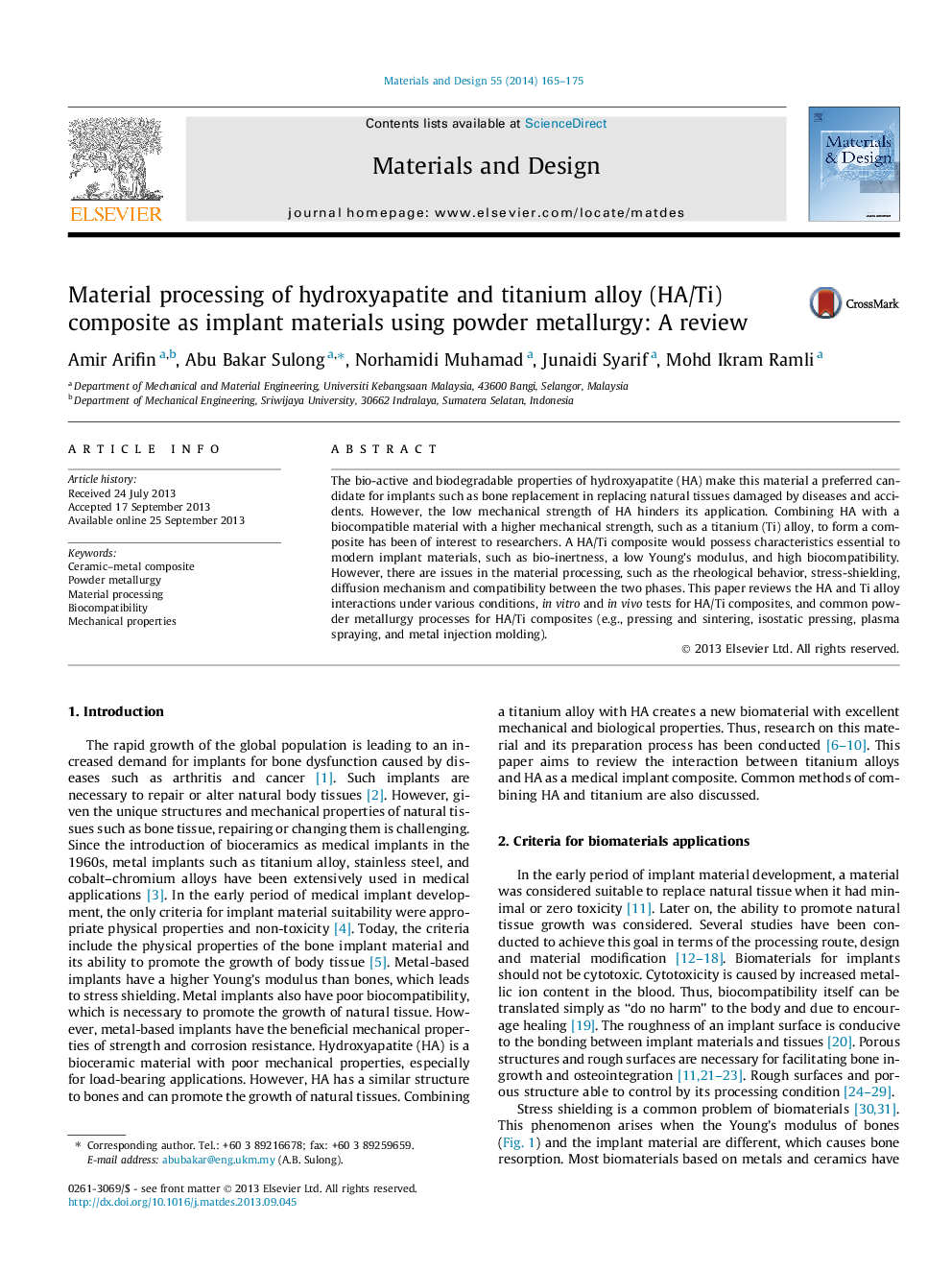| Article ID | Journal | Published Year | Pages | File Type |
|---|---|---|---|---|
| 829522 | Materials & Design (1980-2015) | 2014 | 11 Pages |
•Review on physical and chemical interaction of Ti–HA at processing steps.•Critical criteria to be biomaterial are been summarized.•Critical issues in fabrication methods of Ti–HA composites.•Advantages and disadvantages of those fabrication methods.
The bio-active and biodegradable properties of hydroxyapatite (HA) make this material a preferred candidate for implants such as bone replacement in replacing natural tissues damaged by diseases and accidents. However, the low mechanical strength of HA hinders its application. Combining HA with a biocompatible material with a higher mechanical strength, such as a titanium (Ti) alloy, to form a composite has been of interest to researchers. A HA/Ti composite would possess characteristics essential to modern implant materials, such as bio-inertness, a low Young’s modulus, and high biocompatibility. However, there are issues in the material processing, such as the rheological behavior, stress-shielding, diffusion mechanism and compatibility between the two phases. This paper reviews the HA and Ti alloy interactions under various conditions, in vitro and in vivo tests for HA/Ti composites, and common powder metallurgy processes for HA/Ti composites (e.g., pressing and sintering, isostatic pressing, plasma spraying, and metal injection molding).
